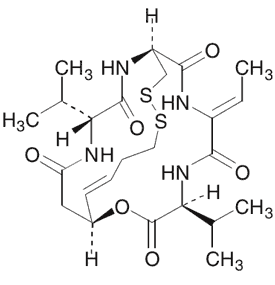Article
FDA Extends Uses for the Lymphoma Drug Istodax
Author(s):
The FDA has granted accelerated approval for Istodax (romidepsin) to be used as treatment for an aggressive form of non-Hodgkin lymphoma

The FDA has granted accelerated approval for Istodax (romidepsin) to be used as treatment for an aggressive form of non-Hodgkin lymphoma after the drug demonstrated the ability to achieve responses in a limited number of patients with the life-threatening cancer.
The agency approved Istodax for patients with peripheral T-cell lymphoma (PTCL) who have received at least 1 prior therapy. The drug was approved under the FDA’s priority review program because of the unmet medical need in treating this serious condition, according to Celgene Corporation, which developed the drug.
PTCL accounts for 10% to 15% of patients with non-Hodgkin lymphoma, with a median survival of approximately 2 years from the time of diagnosis, Celgene said in a press release announcing the FDA approval.
The drug initially was approved in 2009 for the treatment of cutaneous T-cell lymphoma in patients who have received at least 1 prior systemic therapy.
Istodax is a histone deacetylase inhibitor that catalyzes the removal of acetyl groups from lysine residues in histones, a process that modulates gene expression.
Two studies involving 130 and 47 patients, respectively, formed the basis of the drug’s approval for PTCL, with results for both studies indicating a 15% complete response rate, according to the updated prescribing information. An improvement in overall survival has not been demonstrated.
The most serious adverse events associated with the drug include thrombocytopenia, neutropenia, lymphopenia, and anemia. Healthcare providers are urged to monitor these hematological parameters during treatment.
Istodax is supplied as a white powder in a kit with a clear solution and must be reconstituted for intravenous infusion. It is usually given on 3 days during each 28-day treatment cycle and takes 4 hours to administer.









